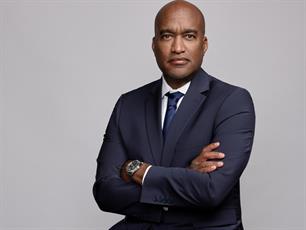Paul Holmes 30 Jun 2007 // 11:00PM GMT
Having identified online opinion leaders (e-fluentials) and opinion leaders among mothers (mon-fluentials), Burson-Marsteller has turned its attention to the nation’s youth, identified a segment of young people aged 10 to 18—Youth-fluentials, in the agency’s terminology—who have significant influence on the products and brands their families and friends purchase.
Nearly 100 percent of the 10 to 18 year-old Youth-fluentials believe they influence their friends’ decisions about clothes and music, and more than 80 percent also hold sway over their parents’ decisions regarding key product areas as far ranging as electronics and food, according to research by Burson and its sister company, Penn Schoen & Berland.
At the same time, the group is also highly malleable. Eighty-nine percent of Youth-fluentials say their friends influence their day-to-day decisions as compared to only 61 percent of youth overall. Eighty-six percent of Youth-fluentials say that their parents influence their day-to-day life decisions.
“While Youth-fluentials hold a vast amount of influence over the spending decisions that their peers and family make, the research shows that they are also an extremely impressionable group,” says Ame Wadler, chief strategic officer of Burson-Marsteller. “They are striving for independence and impact over others but also are highly impacted by parents, educators and their own peers.”
In addition to the substantial role they play in others’ purchasing decisions, Youth-fluentials themselves have significant purchasing power. Some 75 percent of Youth-fluentials spend their own money on magazines, DVDs, clothes and shoes as well as pricier items such as cell phones, electronics and concert tickets.
Affordability is a critical factor in their purchase decisions, the most important factor for 100 percent of those shopping for clothing or electronics. Youth-fluentials also cite affordability as critical when shopping for lower cost items such as beverages (97 percent) and fast food (90 percent). And 89 percent of youth-fluentials are more likely to pay attention to a brand or product if sent a coupon.
While much attention is paid to the amount of time young people spend online, the research shows that the influencing is more likely to be done offline. Seventy-three percent of Youth-fluentials spend time hanging out with their friends while only 58 percent spend time interacting on sites such as MySpace and Facebook.
The total sample of youths is even more indicative of this; 81 percent of all kids are spending time with friends while only 39 percent spend time on MySpace or Facebook websites. Magazines (76 percent), TV (71 percent) and radio (70 percent) remain the primary source for information and entertainment for this age group. Importantly, this audience will engage with all these media in a single day and often simultaneously.
Youth-fluentials are much more likely to respond positively to a brand when that brand is showcased through community events (82 percent). Such events are more motivating than magazine (79 percent), television (77 percent), newspaper (71 percent) or online advertising (65 percent).
“By focusing on the basics that matter to kids—affordability, exclusivity and parental endorsement—an organization can shape a compelling message for these Youth-fluentials,” says Tony Telloni, acting chair of Burson-Marsteller’s brand marketing practice. “The key is to shape the right message and engage youth at events, in traditional media, and online, and then let them take the message and run with it.”


































.jpg)





.tmb-135x100.jpg)











